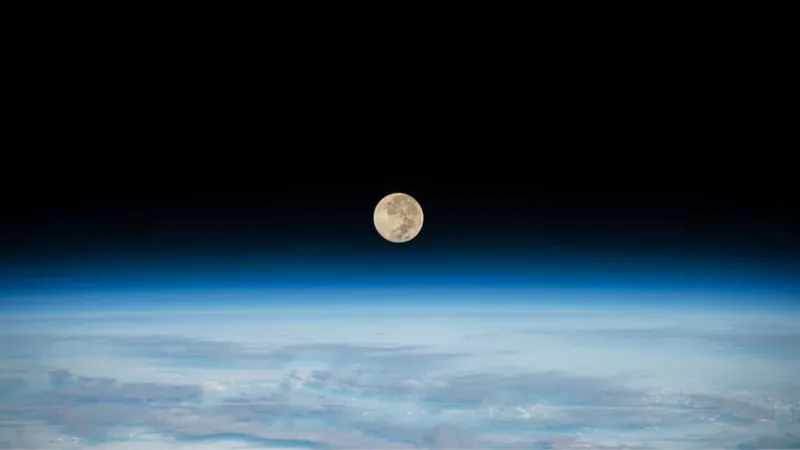
Earth’s Mini-Moons: An Astounding Discovery of the Past and Future!
2024-10-05
Author: Ming
In an exciting cosmic twist, Earth has again claimed a new mini-moon! On September 29, 2024, our planet’s gravitational pull captured asteroid 2024 PT5, which has now joined the illustrious ranks of celestial bodies orbiting our world. But did you know that this isn’t the first time Earth had such a companion?
Asteroid 2024 PT5 was first identified on August 7, 2024, by the Asteroid Terrestrial-Impact Last Alert System (ATLAS). Researchers Carlos and Raúl de la Fuente Marcos from Spain’s Universidad Complutense de Madrid were the first to announce this celestial find in the Research Notes of the AAS.
The History of Earth’s Mini-Moons
Earth has a fascinating history with mini-moons, having welcomed several temporary cosmic guests in the past. The first recorded instance of this phenomenon occurred in 1981, with the mini-moon designated 2022 NX1. This asteroid was captured by Earth’s gravity and made its return in 2022, but it only lingered briefly in our orbit. It’s predicted to come back again in 2051!
Another fleeting visitor was 1991 VG, which passed by Earth in February 1992. Neither of these asteroids managed to complete a full orbit around our planet.
Interestingly, 2006 brought another mini-moon into long-term residence. Asteroid 2006 RH120 remained captured by Earth’s gravity for a full year, from July 2006 to July 2007. Following this, asteroid 2020 CD3 made its presence felt, orbiting our planet for several years before escaping in May 2020.
What Makes Asteroid 2024 PT5 Unique?
Asteroid 2024 PT5, much like its predecessor 2022 NX1, will not finish a complete orbit and is expected to drift away on November 25, 2024. Orbiting within the Arjuna asteroid belt, this miniature asteroid orbits the sun at an average distance of approximately 93 million miles—similar to Earth’s own orbit. Some objects from this belt can come dangerously close to our planet, sometimes within just 2.8 million miles!
Unfortunately for stargazers, 2024 PT5 is too small and dim to be observed with amateur telescopes or binoculars. To put it into perspective, our Moon boasts a diameter of around 2,159 miles, while the newly arrived mini-moon measures just about 37 feet in width. This makes it a challenge for even advanced telescopes to catch a glimpse of our newest celestial neighbor.
In a thrilling cosmic landscape, Earth continues to play host to intriguing mini-moons, a reminder of the complexity and beauty of our solar system. Keep your eyes on the skies—who knows what other exceptional discoveries await us in the vastness of space!

 Brasil (PT)
Brasil (PT)
 Canada (EN)
Canada (EN)
 Chile (ES)
Chile (ES)
 España (ES)
España (ES)
 France (FR)
France (FR)
 Hong Kong (EN)
Hong Kong (EN)
 Italia (IT)
Italia (IT)
 日本 (JA)
日本 (JA)
 Magyarország (HU)
Magyarország (HU)
 Norge (NO)
Norge (NO)
 Polska (PL)
Polska (PL)
 Schweiz (DE)
Schweiz (DE)
 Singapore (EN)
Singapore (EN)
 Sverige (SV)
Sverige (SV)
 Suomi (FI)
Suomi (FI)
 Türkiye (TR)
Türkiye (TR)